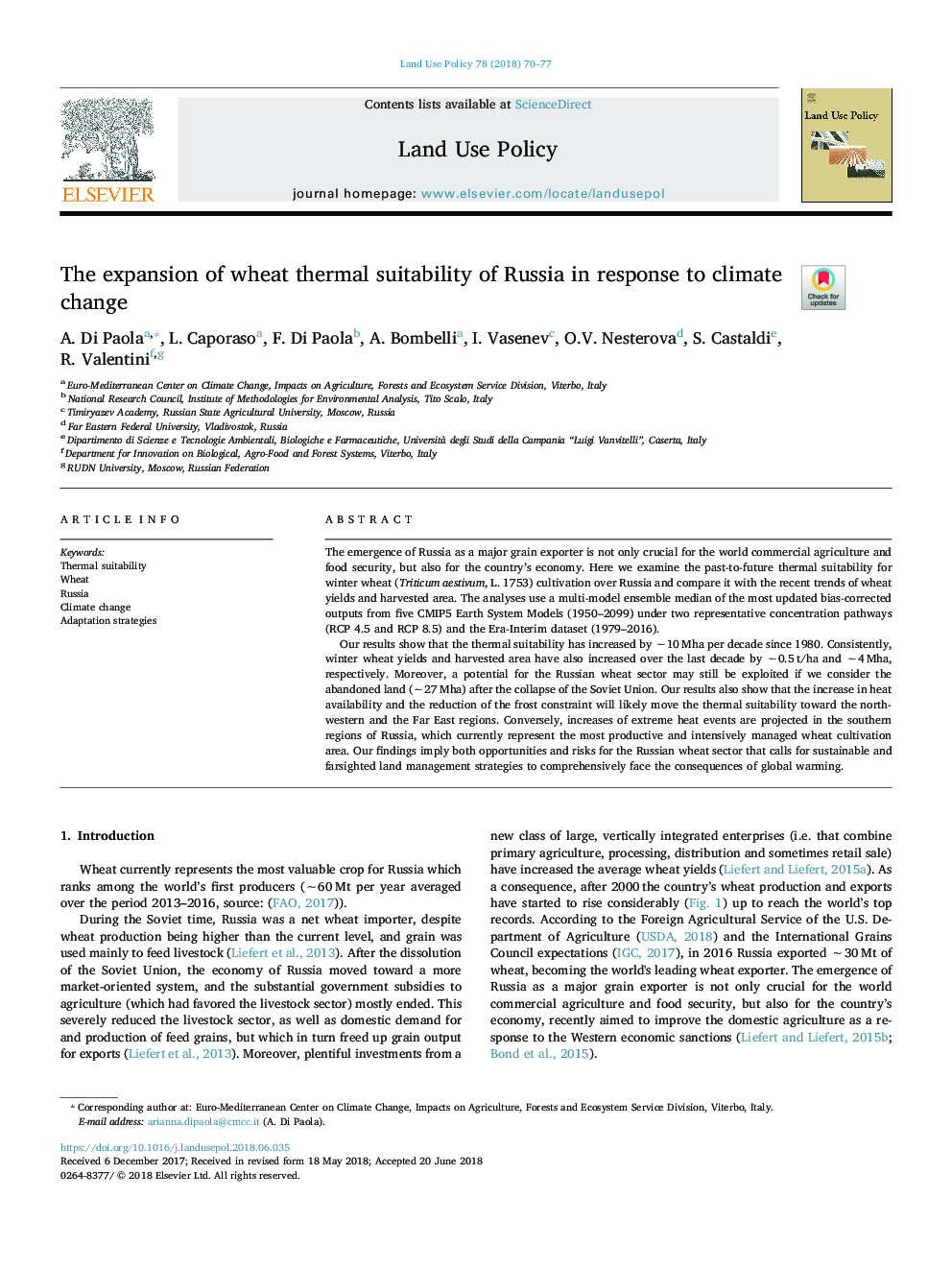| Article ID | Journal | Published Year | Pages | File Type |
|---|---|---|---|---|
| 6546003 | Land Use Policy | 2018 | 8 Pages |
Abstract
Our results show that the thermal suitability has increased by â¼10â¯Mha per decade since 1980. Consistently, winter wheat yields and harvested area have also increased over the last decade by â¼0.5â¯t/ha and â¼4â¯Mha, respectively. Moreover, a potential for the Russian wheat sector may still be exploited if we consider the abandoned land (â¼27â¯Mha) after the collapse of the Soviet Union. Our results also show that the increase in heat availability and the reduction of the frost constraint will likely move the thermal suitability toward the north-western and the Far East regions. Conversely, increases of extreme heat events are projected in the southern regions of Russia, which currently represent the most productive and intensively managed wheat cultivation area. Our findings imply both opportunities and risks for the Russian wheat sector that calls for sustainable and farsighted land management strategies to comprehensively face the consequences of global warming.
Related Topics
Life Sciences
Agricultural and Biological Sciences
Forestry
Authors
A. Di Paola, L. Caporaso, F. Di Paola, A. Bombelli, I. Vasenev, O.V. Nesterova, S. Castaldi, R. Valentini,
